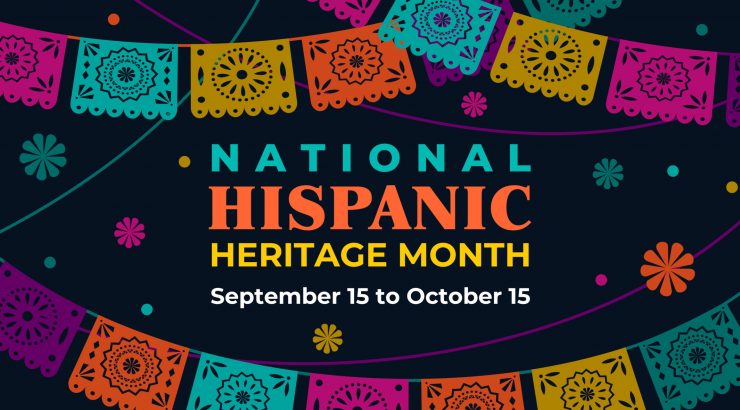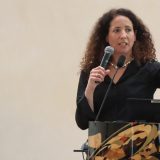
A Fluid and Complicated Identity: Hispanic Heritage Month
September 30, 2021
By: Sam De La O and Talisa Flores
The Latinx Staff and Faculty Forum hosted Meet New Faculty in Latinx Studies, a panel to kick off Hispanic/Latinx heritage month. Moderated by Dr. Ruben Espinoza, director of the Interdisciplinary Minor in Latinx and Latin American Studies, the panel featured three of Wilkinson College’s newest Latinx faculty members, Dr. Nora Rivera, Assistant Professor of English, Dr. Nancy Rios-Contreras, Assistant Professor of Sociology, and Dr. Claudia Fuentes, Assistant Professor of Peace Studies,.
Hispanic Heritage Month is celebrated in the United States each year from September 15-October 15, but in their discussion, Wilkinson College Latinx faculty explained how terms like “Hispanic” can not fully encompass the numerous, diverse identities being celebrated.
“Our Latinx communities are not only multicultural, they are multiethnic and multilingual,” says Dr. Rivera. “In Mexico alone, there are 364 Indigenous language variants, some of which have been brought to the United States through Indigenous diasporas.”
“Hispanic Heritage Month is important because it gives us a chance to celebrate our culture and history. The community keeps growing and contributing to the U.S. generation after generation,” says Dr. Espinoza. “It also gives us an opportunity to highlight our diverse experiences. For example, I can be part of the Latinx Staff and Faculty Forum at Chapman, then go home and participate in a Lowrider cruise that celebrates Chicano culture. A student can be part of the Latinx Student Club on campus, then go home and celebrate at the Puerto Rican Day Parade, Salvadoran Independence Day, or countless other ethnic, Latin American events.”
Each faculty member on the panel shared their thoughts on how those within Latinx communities identify themselves.
“There is no language that can ever represent the historical trauma of people, as language is limited,” Dr. Rios-Contreras said. “No language can match the pain of colonization and historical trauma, or the persecution within the United States from border patrol.”
“Our identity is fluid and complicated. And that’s a good thing,” Dr. Espinoza said.
Dr. Fuentes explained that she rarely uses the term Latinx to identify herself or others, because it is an unfamiliar word in Latin America. Instead, the term Latine is used, along with Latina and Latino. “Latine is something that, in the region, is used. Latinx, not so much. I write in Spanish, and I relate to people in the region. I’m not against the term [Latinx], but it is very American.”
Dr. Fuentes, Dr. Rivera, and Dr. Rios-Contreras each look forward to connecting with the Latinx population on campus as they get to know the Chapman community. Dr. Rios-Contreras hopes to support Latinx students by being the mentor she wishes she’d had as a student. Dr. Ana Palomar, Assistant Instructional Professor of Spanish, agrees and extends that advice to students: “Be who you needed when you were growing up!”
“As an academic from el barrio, and as a Spanish professor by vocation, I’m passionate about teaching my family’s language as a second language to students who might not have a strong background in Spanish, and as a heritage language, to students who are relearning or enhancing their skills in their heritage tongue. My father is from Cuba and my mother is from Mexico,” Palomar noted in an interview after the event.
Dr. Renee Hudson, Assistant Professor of English, also shared her thoughts on Hispanic Heritage Month with the Voice of Wilkinson.
“The framing – and timing – of what’s traditionally called Hispanic Heritage Month is instructive: Hispanic is a term invented as a result of the 1980 census and speaks more to the need to taxonomize people rather than the desire to understand how people self-identify. Hispanic Heritage Month starts in the middle of September because that coincides with a number of independence day celebrations in Latin America.” Yet, she notes the commemorations often ignore the role of Indigenous and Afro Latin Americans in liberation movements, a trend that continues today. “Finally, we arrive at the end of Hispanic Heritage Month, which usually ends a couple days after Columbus Day, which disregards the fact that Columbus didn’t land in (much less found) Hispanic America or even Latin America; he thought he was in Asia. To put it simply, Hispanic Heritage Month is a time to think about the work Latinx communities still have to do to imagine a non-hegemonic latinidad that doesn’t rely on proximity to whiteness.”

